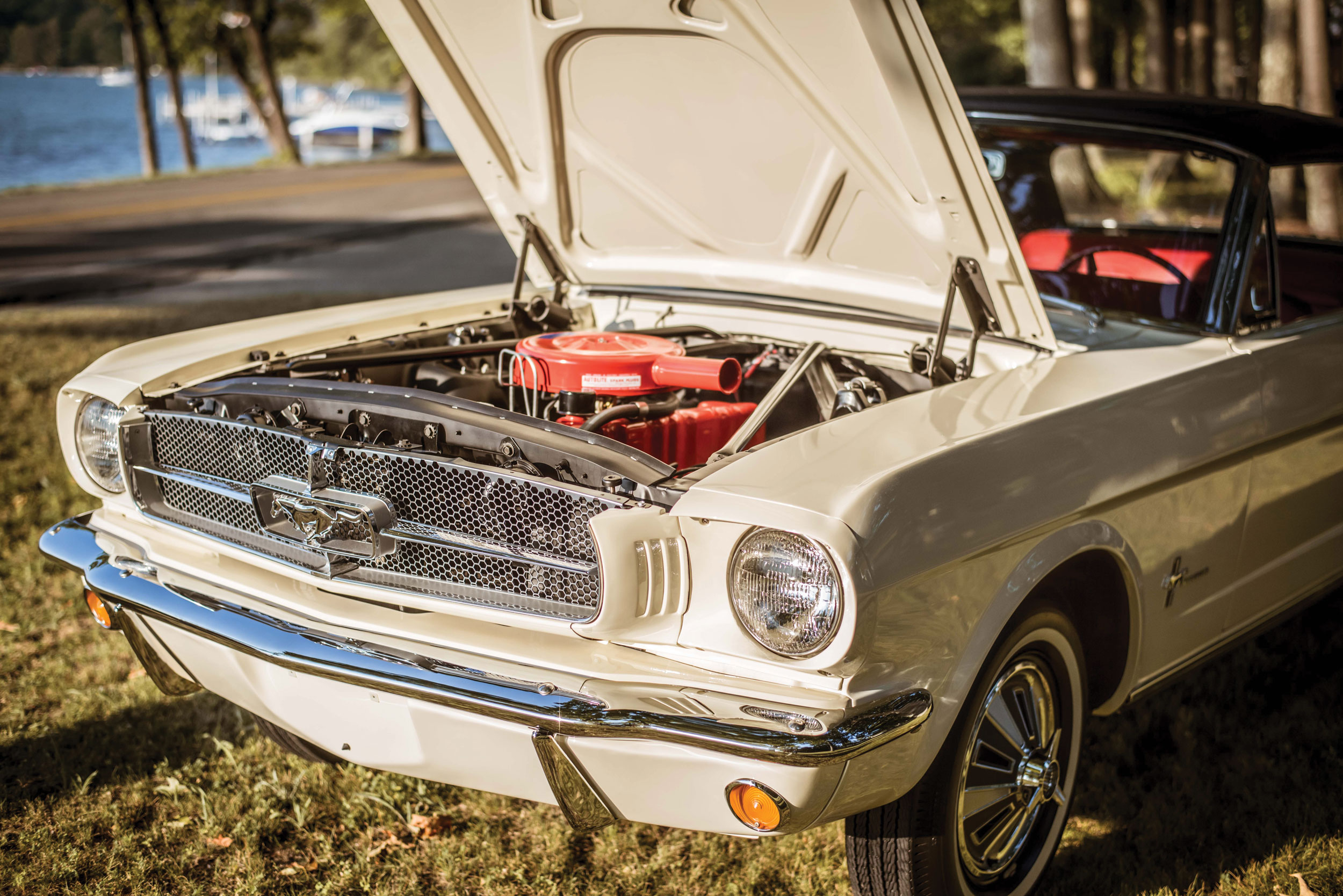How to remedy a Mustang’s overheating issue
Hagerty Drivers Club member Paul V. Romero writes: My ’67 Mustang with its original 289 V-8 runs hotter than normal during the summer months. I live in Santa Fe, New Mexico, where it doesn’t get much above 90 degrees. I have replaced all the seals and hoses, and I’ve installed a four-core aluminum radiator. I’ve considered replacing the original fan with a couple of electric fans or putting fans in front of the radiator, but there’s not a lot of room. I would like to keep the original look of the engine.
The answer here depends on how the car is running hot. If it’s hot even while cruising down the highway, it’s a water-flow issue. If it’s cool while in motion and only hot while idling in traffic, it’s an airflow issue.
For the water-flow issue, verify that the thermostat is opening by feeling the lower radiator hose and making sure it’s hot when the vehicle is warmed up. Inspect the water pump and look for corroded vanes that aren’t moving water efficiently. Power-flush the block by removing the drain plugs at the right front and left rear. Note that there is active debate on Mustang forums on whether the four-core radiator actually cools better. Some folks argue the thicker core impedes airflow. Others say what you really need is the increased radiator volume of the 24-inch big-block radiator. But let’s assume for the moment that you’re not radiator limited.
For the airflow issue, if your car doesn’t have a fan shroud, install one. You could also try updating the mechanical fan. Folks on the Mustang forums seem to like the 17-inch Flex-a-lite fan. If those measures don’t help, you might be forced down the electric-fan route. I’m personally not a big, uh, fan of removing an original mechanical fan unless there’s no alternative, but electric fans do have the advantage that their speed isn’t dependent on engine rpm; they move just as much air at idle.
There are many choices for an electric-puller-fan kit for your car. Some are single fan and some are twin fan. Some have integrated shrouds that bolt directly to the sides of the radiator, but you’d need to check carefully for those that will mount onto your aftermarket radiator and those that will require drilling holes. Other fans have no shroud and instead zip-tie directly to the radiator. These kits use a temperature sensor and a relay to automatically turn the fan on above about 180 degrees. Buy a name-brand fan or fan assembly from a reputable vendor. I’d also advise taking the cubic-feet-per-minute (cfm) ratings of any unbranded fan with a grain of salt. If Spal says its product moves 2000 cfm, believe it. A no-name, Chinese-made fan, not so much.
Be aware that the electrical draw from a big cooling fan is substantial and can stress an old alternator. The rule of thumb is one amp per 100 cfm of airflow, so a 2000 cfm fan can draw 20 amps. At a minimum, make sure the belt isn’t glazed. It’s not unusual to install a big cooling fan and have the belt squeal due to the additional load on the alternator. Note that many electric fans can be loud, too.
For these reasons, the idea of keeping the mechanical fan and mounting a manually switched auxiliary pusher fan in the nose is appealing. But as you say, in your car, it looks challenging. Spal makes a 10-inch low-profile pusher fan, part no. 30100446, which moves 802 cfm of air. But a front-mounted pusher simply isn’t as efficient as a rear-mounted puller, so keep that in mind.


